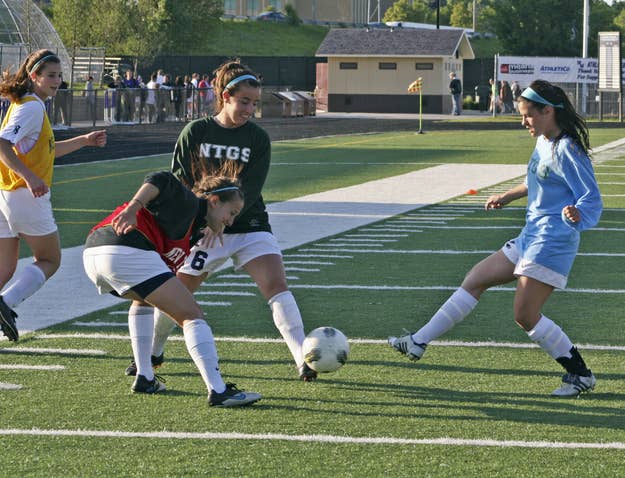
Women's basketball may have made it onto ESPN, and the U.S. women's Soccer team may have included some of the biggest celebrities from this side of the Atlantic at the recent Olympic games. But 40 years after Title IX legislation made it mandatory for boys and girls to have equal athletic opportunities in school, high school boys remain far ahead high school girls in athletic opportunities provided to them, a new study [PDF] reports.
Researchers at the University of Michigan compared data from four-year public high schools across the country, including schools that do and do not offer interscholastic sports. They broke the data down by regions, what type of communities the schools were in (rural vs. city, etc), and how much money the schools spent on athletics. Then they compared data from the 2009-10 school year with data from school years 1993-94 and 1999-2000.
They found that while opportunities for girls increased from the 1999-00 school year to the 2009-2010 school year, they still lagged behind opportunities boys had to participate in athletics by an average of 12% at schools that offered interscholastic athletics, compared to 11% at the same schools in 1999-2000. While 53% of boys in 2009-10 had an opportunity to participate in interscholastic athletics, only 41% of girls on average had opportunities. (Opportunities in the study were defined as a situation or condition within a school that allows a young person to participate in some type of athletic activity.) More alarmingly, researchers found that while the gender gap in opportunities shrunk from 14% to 11% between the 1993-94 school year and the 1999-00 school year, it actually widened again by 2009-2010, to 13%.

The study authors note that economic resources in the schools seemed to matter a lot when it came to participation opportunities for both sexes. But their findings indicate even in wealthier schools, the gap hasn't decreased between boys and girls even as opportunities have increased for both. They also show that the Northeast overwhelmingly has the greatest number of female-only and male-only teams, followed by the Midwest, West and then South. "The difference [between female and male-only schools] may also reflect stereotypical and misleading beliefs that sports are somehow more important for the healthy development of boys than girls," the researchers noted.
The study also found that schools with more women and minorities were far more likely to have dropped interscholastic athletics than their counterparts.
The studies' authors warn that their findings indicate that progress towards gender equity has reversed over the past decade thanks to a false sense that girls were finally receiving an equal chance to play sports and less funding due to the recession. "One sociological tenet contends that, during times of economic hardship, social inequalities tend to grow more marked rather than diminish," the researchers explained. "This dynamic may be playing out with regard to gender equity in high school sports."
So while it's legally possible for girls to hit the gym as much as the boys do, more than 40 years after major legislation changed the sports scene in the United States, there's still not an equal playing field. Studies like this may help fight back against common assertions that Title IX has taken away opportunities from boys by causing schools to drop expensive sports teams in order to make teams for girls. With all the benefits sports provide to both boys and girls, it seems like every public school child should not only get the chance, but be encouraged, to take the field, court or track. By the look of the country's skyrocketing obesity rate, it's certainly better than the alternative.

